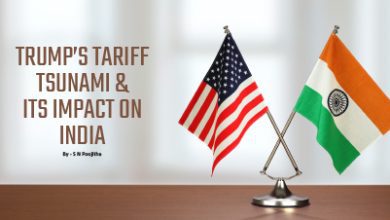Breaking Down the Blush: Unveiling the Costly Reality of the ‘Pink Tax’

Introduction
Gender bias shows up in many areas of life, like lower wages for women, unfair inheritance rights, and unequal chances to get an education. One hidden form of this discrimination is the ‘pink tax’, where women often pay more for things that are practically the same as what men buy. The idea of a ‘pink tax’ started after World War II, when the color pink became totally linked to being feminine. This connection between pink and girls came about because of a few things, like propaganda pushing women back into housework after the war, and clothing companies trying to make more money by creating clothes and colors specifically for boys or girls.
Decoding the Drivers of the ‘Pink Tax’
Companies might try to justify the pink tax by pointing to the differences in women’s clothes and toiletries. They say women’s items are more complex to make, with fancy designs, lots of different sizes, and a mix of materials. This, they argue, requires skilled workers, better quality materials, and more fabric wasted during cutting. But there’s another side to the story. Companies know women are willing to pay more for things they see as high quality, attractive, and convenient. So, they charge more for women’s products even if the costs aren’t that much higher. This way, they make the most profit. Ideally, companies should be more ethical and charge fairly, but often making money comes first. The pressure to be fair isn’t always strong enough to overcome the desire for bigger profits. This price difference between men’s and women’s things can get even worse when countries charge higher taxes on the materials used to make women’s clothes. These extra costs get passed on to consumers, making the pink tax even more of a problem.
Pink Tax Presence Across Industries
Haircuts for women often cost more than men’s, even for similar styles. Salons might charge Rs. 400 for a women’s cut, while a nearly identical man’s cut costs Rs. 200. This pattern reflects a “pink tax” on women’s services, despite comparable effort.
Similarly, razors marketed towards women are priced higher than men’s, despite minimal variations like color. A basic five-pack of pink women’s razors might be Rs. 350, compared to Rs. 200 for a blue men’s pack. Pricing hinges on target demographics, not product differences.
Gender bias in pricing isn’t limited to adults. Toys and accessories for girls frequently carry a premium compared to those for boys, even when the only difference is color. A gender-neutral toy painted pink might cost more than the exact same toy in another color. This practice unfairly inflates the cost of products marketed towards girls.
Moisturizers targeted at women often come with significantly higher price tags compared to similar products for men. This price difference can’t be justified by the ingredients or effectiveness, which are often very similar. Instead, it’s likely a result of marketing strategies that exploit how consumers typically perceive products for women.
In conclusion, women systematically pay more for similar goods and services simply because they are marketed towards them. This practice represents a form of gender-based economic discrimination that has a negative impact on women’s financial well-being.
Female Consumers’ Take on the Pink Tax
The survey revealed widespread awareness of gender-based price discrimination: 72.6% of respondents believe it exists, and 61.1% recognize it as the “Pink Tax.” Interestingly, a majority (63.7%) are students financially dependent on parents. While 26.5% hold full-time jobs, 13.3% work part-time, and a small portion (2.7%) are in business. The most common Pink Tax encounters involve skincare (59.3%), health and hygiene products (54.9%), and hair salon services (56.7%). Interestingly, both gender discrimination and product differences are perceived as reasons behind the Pink Tax. Despite the Pink Tax, most respondents (82%) prioritize practicality over aesthetics. However, cost savings do incentivize some to purchase men’s products: 6.2% frequently do so, and 39.8% occasionally. Notably, nearly 40% (39.8%) are highly
likely to switch to men’s products offering equal effectiveness, suggesting a potential market for unisex options. This is further supported by over half (54%) of female respondents being willing to find cheaper men’s alternatives. However, the impact of the Pink Tax varies. While 46.9% feel it only affects their savings occasionally, rarely, or not at all, over half (68.1%) recognize its broader economic impact. Only 6.2% see no economic consequence. Some respondents even believe there are additional, non-monetary effects.
While uncertainty exists about entirely eliminating the Pink Tax (44.2% are unsure), the survey highlights strong support for addressing it through policy changes, regulations, and raising awareness. The gender pay gap, coupled with the “pink tax” on products and services marketed towards women in India, creates a double burden. Women not only earn less than men but also pay more for essential items. This significantly limits their purchasing power and financial security. Furthermore, the inflated prices of these products can perpetuate unrealistic beauty standards. The pressure to conform to these standards can negatively impact women’s self-esteem and force them to prioritize aesthetics over affordability.
India’s Pink Tax Struggle
Thanks to relentless advocacy by activists, the central government eliminated the 12 percent GST on menstrual sanitary products in 2018. The International Labour Organisation (ILO) reveals that women often earn less than men for identical work. In India, the average wage gap is 19 percent across all sectors, with the disparity even more pronounced in agriculture, where women do 80 percent of the work. Globally, women of color face even steeper hurdles, with Black women earning just 64 cents and Hispanic women only 56 cents for every dollar a white man makes. In retirement, women receive only 70 percent of the income that men do. The gender gap is also stark in leadership roles, where male dominance is pervasive. A 2021 survey found that women held only 10 percent of management positions and made up just 5 percent of CEOs in India.
In contrast, contraceptives, deemed essential, are tax-exempt, highlighting the absurdity of taxing sanitary products as luxuries under the “tampon tax.” The issue gained significant traction on social media, amassing over 400,000 signatures on petitions from activists, celebrities, politicians, and performers.
Conclusion
The Pink Tax is one of the most common forms of gender-based discrimination, which affects women economically in various fields across all. The way it shows up is through higher prices on women’s personal care products and clothes and even haircuts as such make it worse for women who are facing financial difficulties. The effort towards addressing this issue needs to go beyond just creating consumer awareness. It needs to encompass different policies changes, regulatory action points and public campaigns; these can make an impact seen through activist initiatives like the removal of GST on menstrual products in India. This should not be seen in isolation because women already face significant pay gaps due largely not only to a gendered but also racialized hierarchy with white males at its apex despite their poor leadership qualities evidence by numerous scandals surrounding them. Through coordinated efforts, including consumer activism and policy initiatives, we can create a fairer marketplace that enhances women’s financial empowerment and advances gender equality.
Authored by- Mehar Kaur
Ex-Legal Intern @Singhania & Co.
References
- Rachel Raji, Anna Nicholas, Krithi Jignesh Shah, A Study on Perception of Female Consumers towards Pink Tax with Special Reference to Cochin City, ST. TERESA’S COLLEGE (AUTONOMOUS), ERNAKULAM (Apri; 17, 2023), https://shorturl.at/PXthT.
- International Equal Pay Day 2022: How Far Has India Filled The Gap, available at: https://www.businessworld.in/article/International-Equal-Pay-Day-2022-How-Far-Has-India-Filled-The-Gap/17-09-2022-447054/







